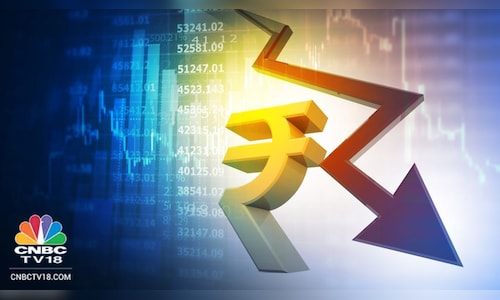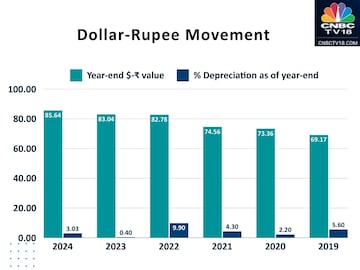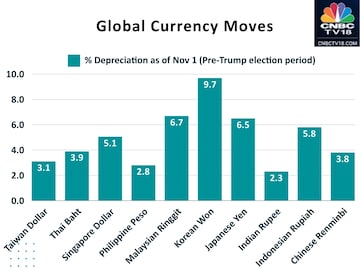
| Company | Value | Change | %Change |
|---|
Here’s a simple example to illustrate why depreciation is crucial for the Indian economy.
Imagine a Chinese company manufacturing and selling umbrellas globally for $5 apiece. An Indian SME (small and medium enterprise) can produce a similar umbrella for ₹420 per piece, including a small profit.
If the rupee trades at ₹80 per dollar, the Chinese umbrella would cost ₹400 (5×80) in India, significantly undercutting the local manufacturer. In this scenario, the domestic SME would struggle to compete.
Also Read: Why the rupee is in a free fall against the US dollar
However, if the rupee depreciates to ₹85 per dollar, the landed cost of the Chinese umbrella increases to ₹425 (5×85). This gives the Indian SME a fighting chance to survive.
The same principle applies to exports. If the Chinese umbrella sells globally for $5 per piece and the rupee production cost is ₹400, at ₹85 per dollar, the Indian umbrella would cost approximately $4.7 (400/85), making it more competitive in international markets.
Countries often allow their currencies to depreciate in line with key trading partners to protect domestic industries from cheap imports and keep exports competitive. Thus, currency depreciation is generally seen as beneficial for the economy, contrary to popular belief.
Understanding Rupee Depreciation Trends
Concerns about excessive rupee depreciation may be overblown. Historical data reveals that the rupee has depreciated by 2-5% annually in many years. Since 2019, the average yearly depreciation has been 3.3%.
Also Read: The rupee could be set for a fresh lifetime low–here’s why
If the rupee were to depreciate by 3% in 2025, it would reach ₹88 per dollar—consistent with past trends.

Looking at a broader context, currencies across the globe, including the rupee, depreciated against the dollar after Donald Trump won the US presidential election. However, the rupee depreciated the least among major currencies.

While this is a notable achievement, it is also a reminder to prepare for further depreciation, as it supports the economy.
(Edited by : Shweta Mungre)
First Published: Jan 2, 2025 5:35 PM IST



